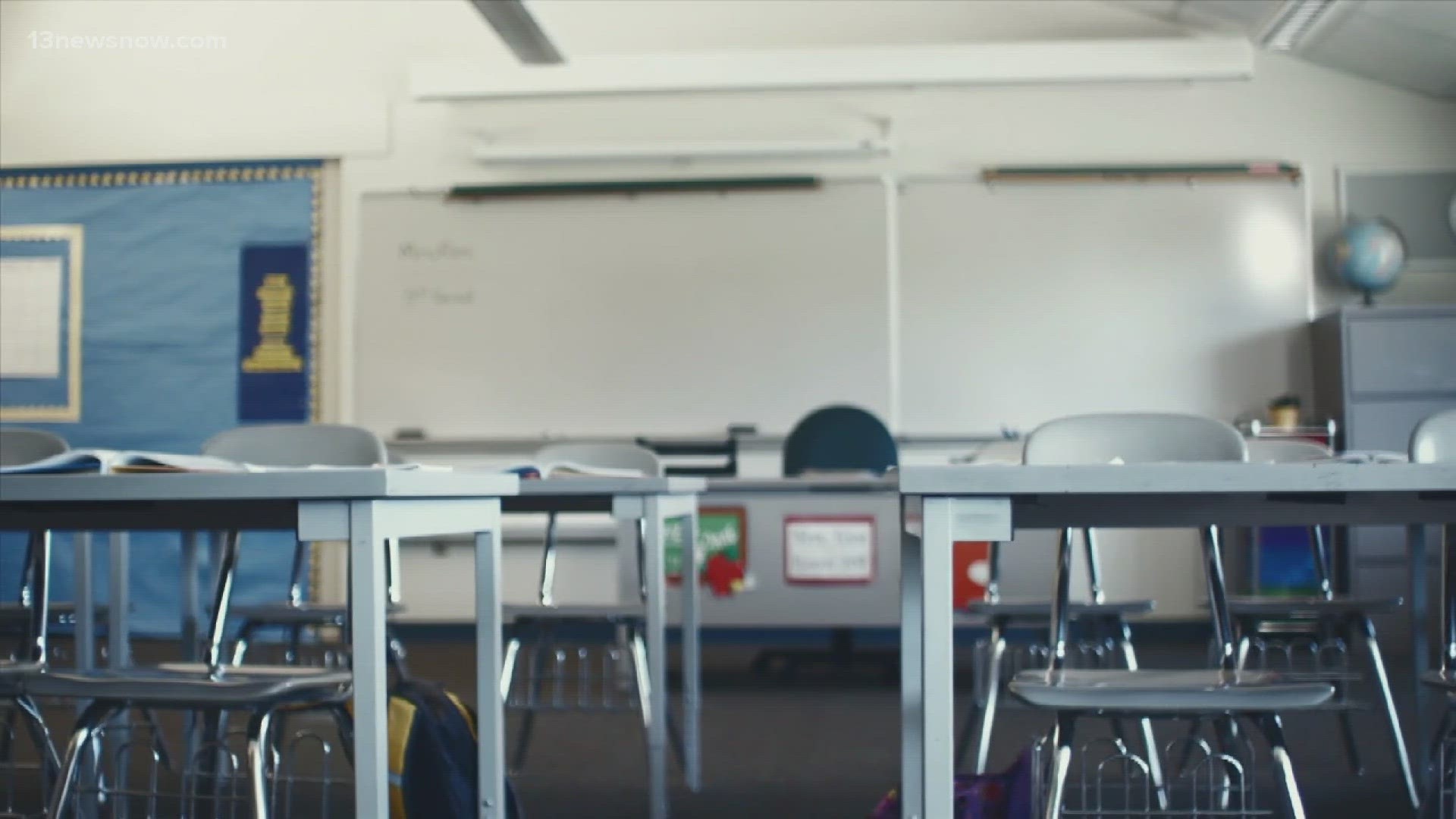NORFOLK, Va. — Teacher shortages are not a new phenomenon here in Hampton Roads or across the country.
It’s a problem school divisions have been facing for years.
A new bill proposes solutions to get more teachers through the pipeline and into the classroom.
"We’re dealing with a sizeable teacher shortage in the United States that was significant before COVID, it’s grown more significant," said Sen. Tim Kaine.
He said it’s particularly noticeable in rural communities and in specialty roles, like special education.
Five schools in our area rank among the top 10 schools in the state with the most extreme teacher vacancies, according to the Virginia Department of Education.
Norview Middle and Southside STEM Academy at Campostella in Norfolk, Douglass Park Elementary and Cradock Elementary in Portsmouth and Southampton Middle in Southhampton County.
According to data from the Virginia Department of Education, the total number of unfilled positions by FTE in Norfolk was 319 during the last school year.
Portsmouth had 158 and Virginia Beach had 106. Hampton had 83, Newport News had 161 and Chesapeake had 82. Suffolk had 87.
The latest report from the Virginia Department of Education shows there were more than 3,500 unfilled teaching positions across Virginia for the 2022-2023 school year.
"Just doing the same thing that we’ve always done is not going to solve this and so we have to undertake some innovative strategies," said Kaine.
To do that, he and Sen. Susan Collins (R-ME) reintroduced the PREP Act.
It would expand the definition of “high need” divisions, to provide additional federal resources and set aside federal funds to address teacher shortages and improve educator preparation programs.
The Prep Act would also encourage school divisions to partner with universities to create a pipeline for teachers and increase support for educator prep programs at HBCUs.
"To better use the nation’s HBCUs and minority-serving institutions as our classroom populations become more diverse," said Kaine.
Kaine said the majority of public school students in the U.S. are students of color and the teaching workforce is only comprised of 20% teachers of color.
He said recruiting a racially diverse teaching pool is vital.

